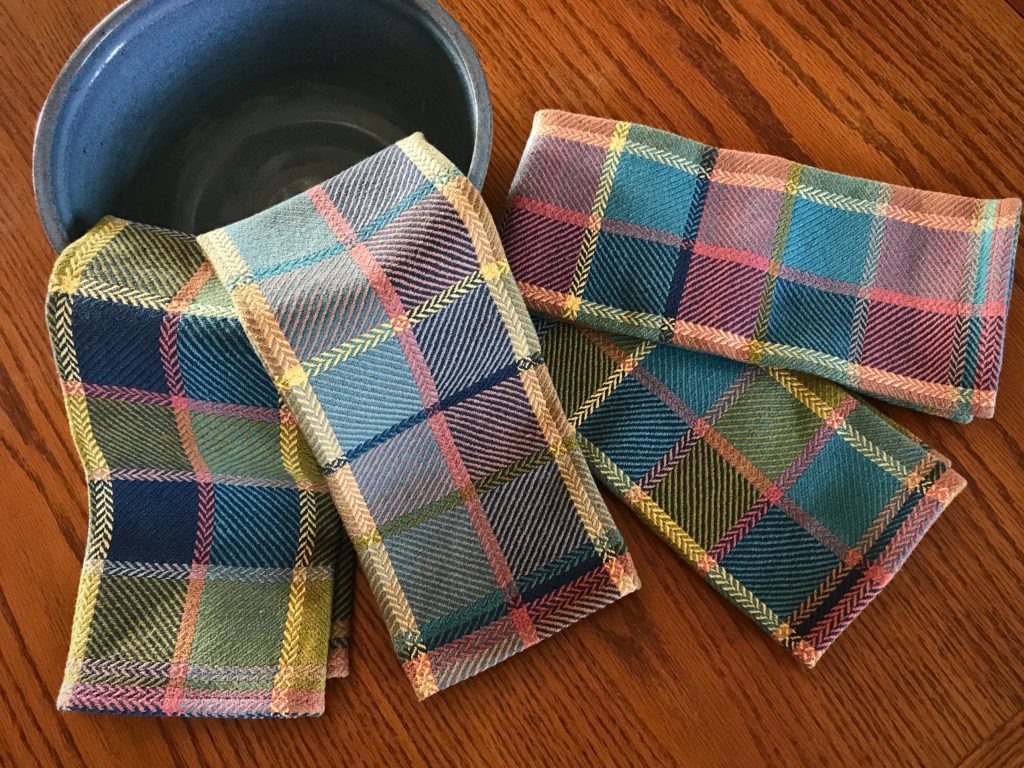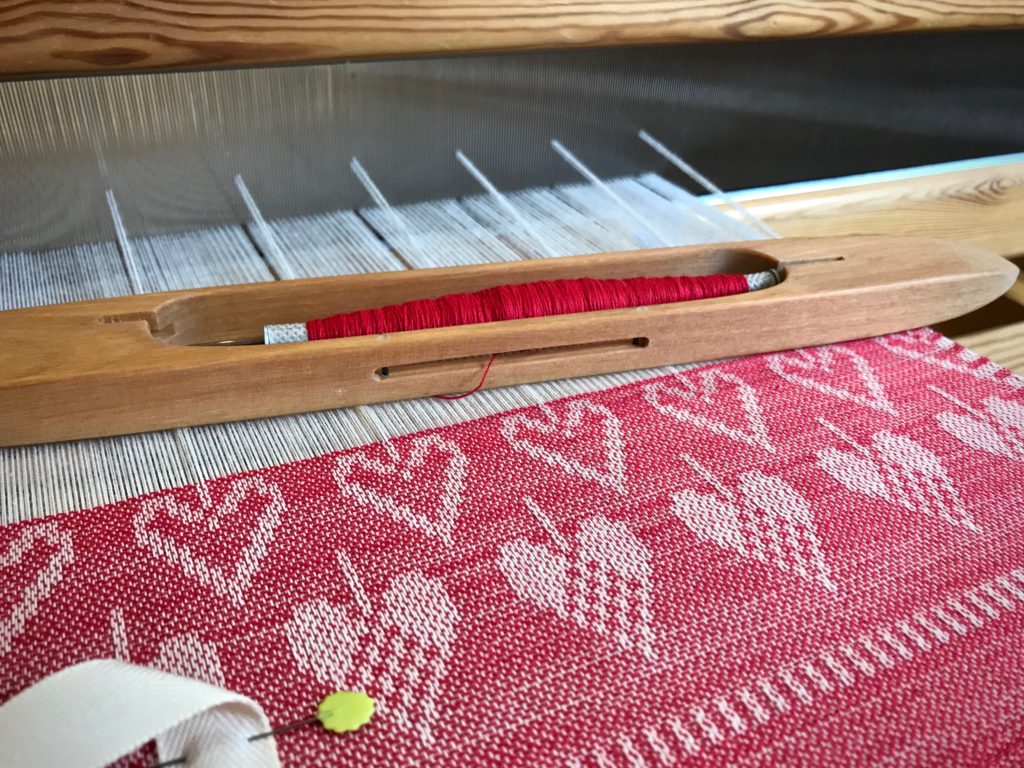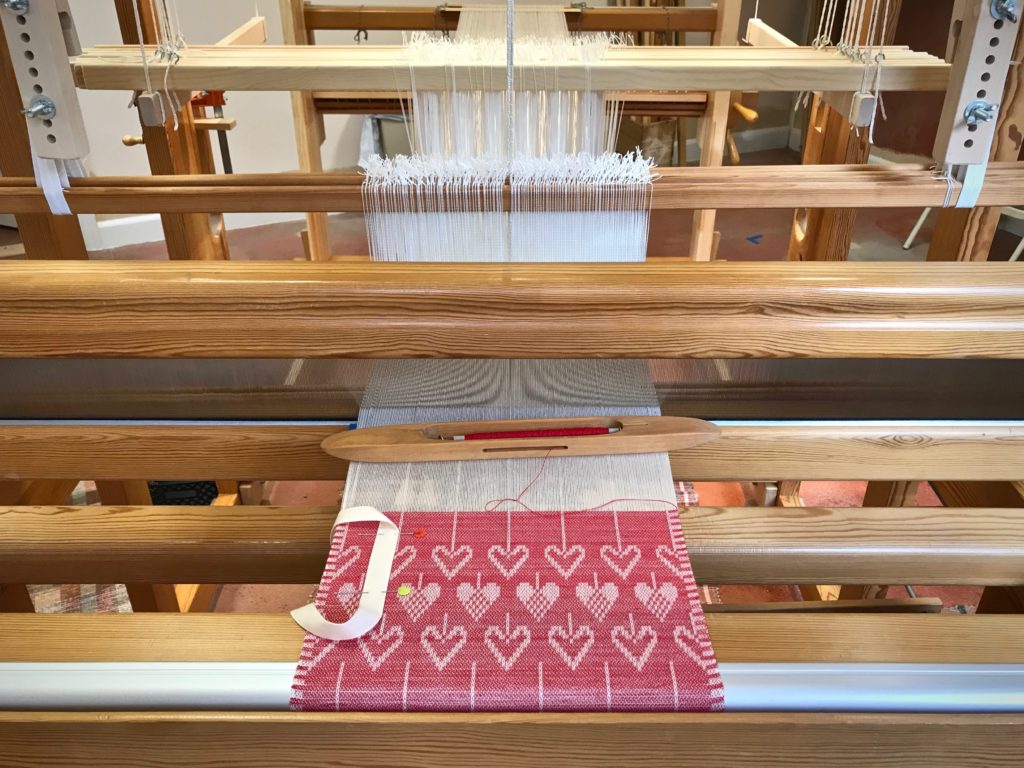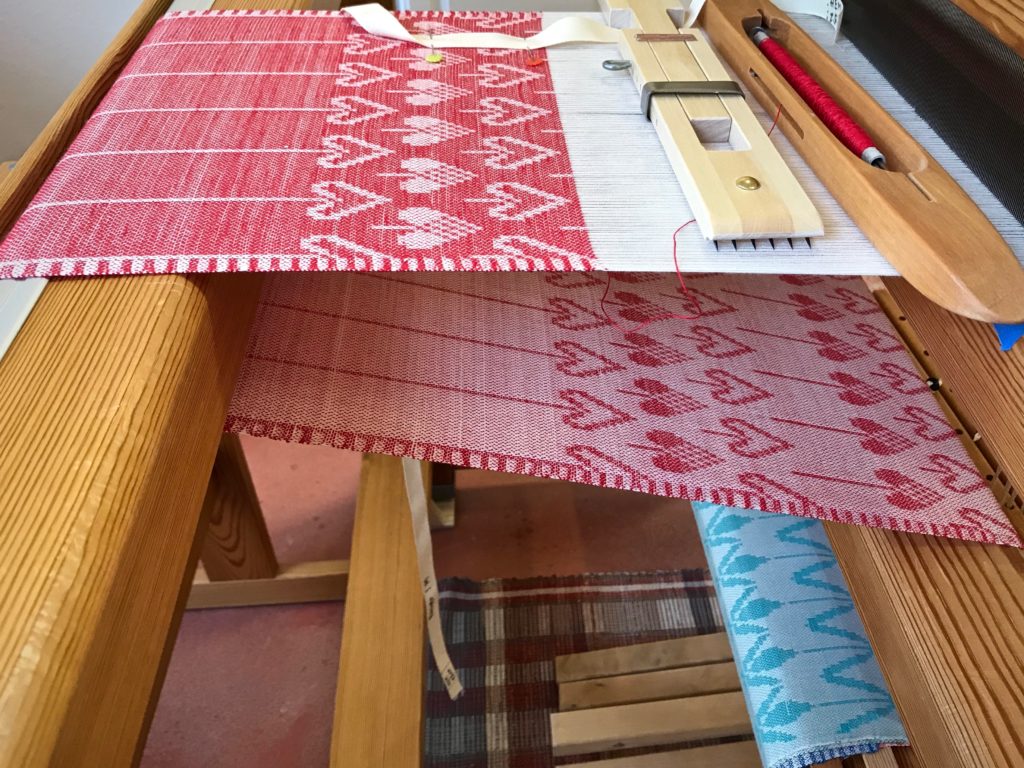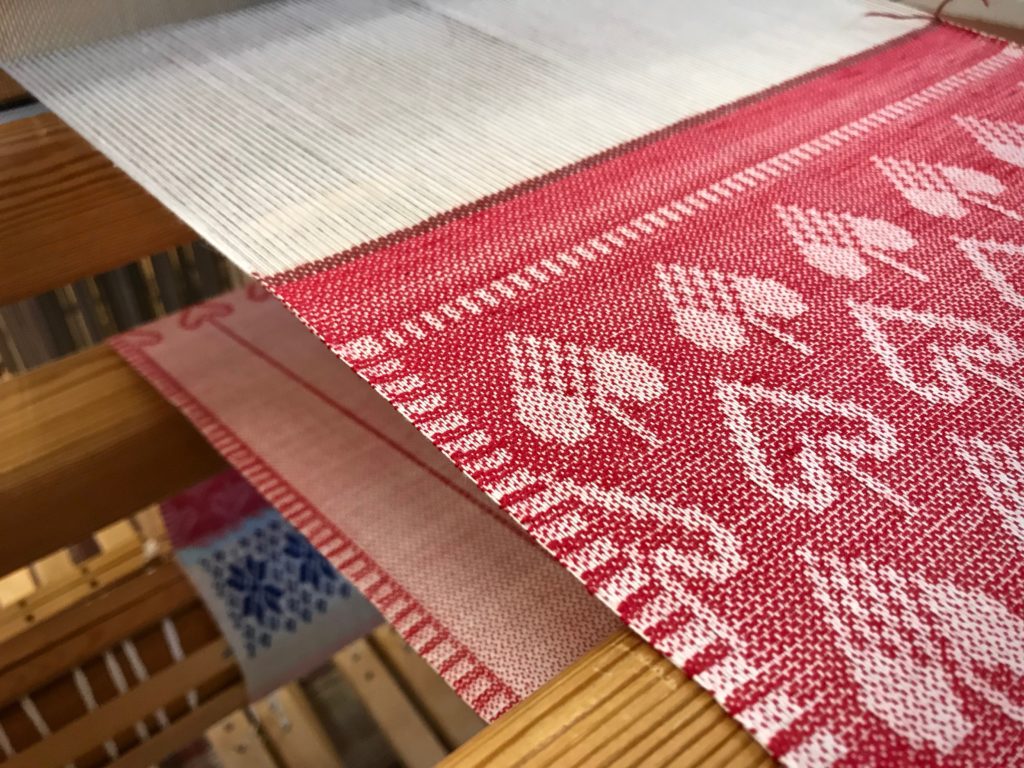I am getting ready for Christmas. When I was a little girl, my Aunt Helen made a Christmas tree skirt for our family. It was a simple white felt skirt, with added colorful felt silhouettes depicting Christ’s Nativity. I want to reproduce that Christmas tree skirt using handwoven fabric. This fabric on the Ideal loom will be the base of the skirt. I will use some of my myriad handwoven fabric remnants for the colorful Nativity appliqué.
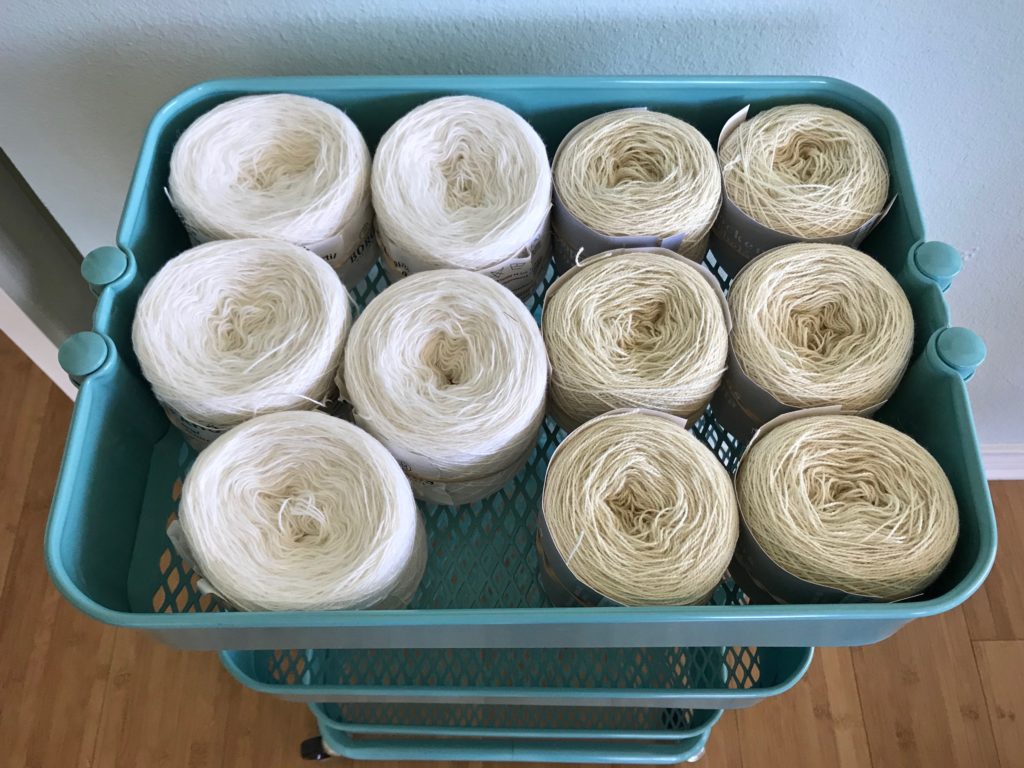
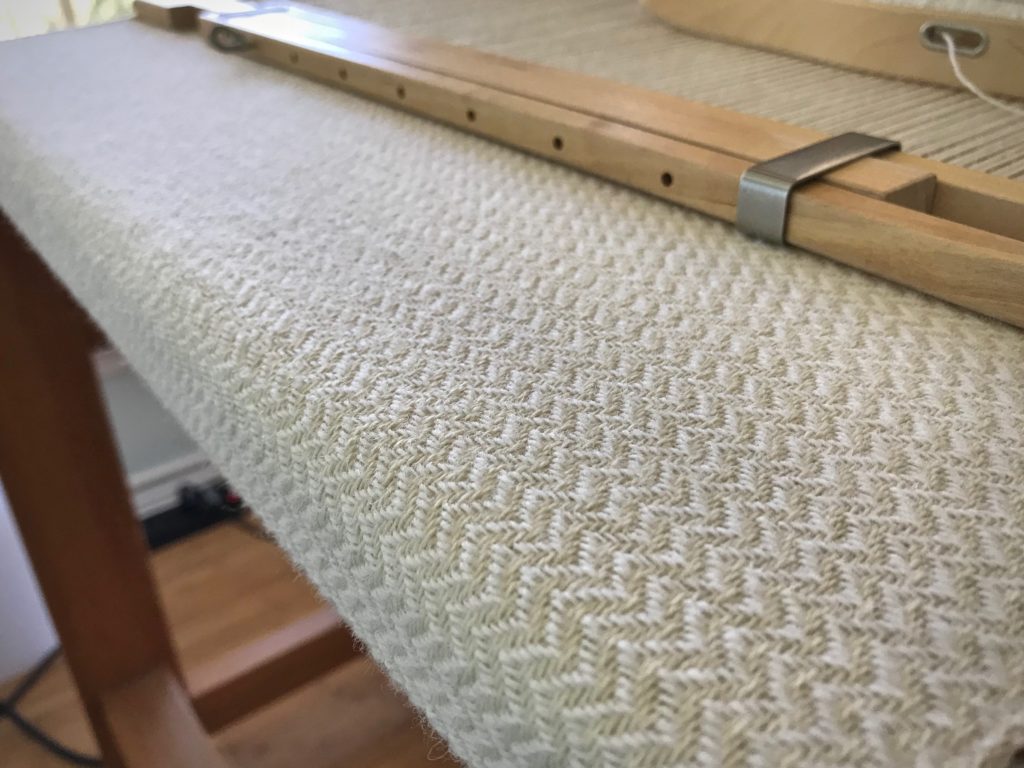
The warp is unbleached 8/2 Möbelåtta wool. The weft is bleached 6/1 Fårö wool. The 6-shaft point twill fabric is delightful. Perfect for what I have in mind. It is peaceful, soothing, restful, and calm. You can see that everything is going to be all white.
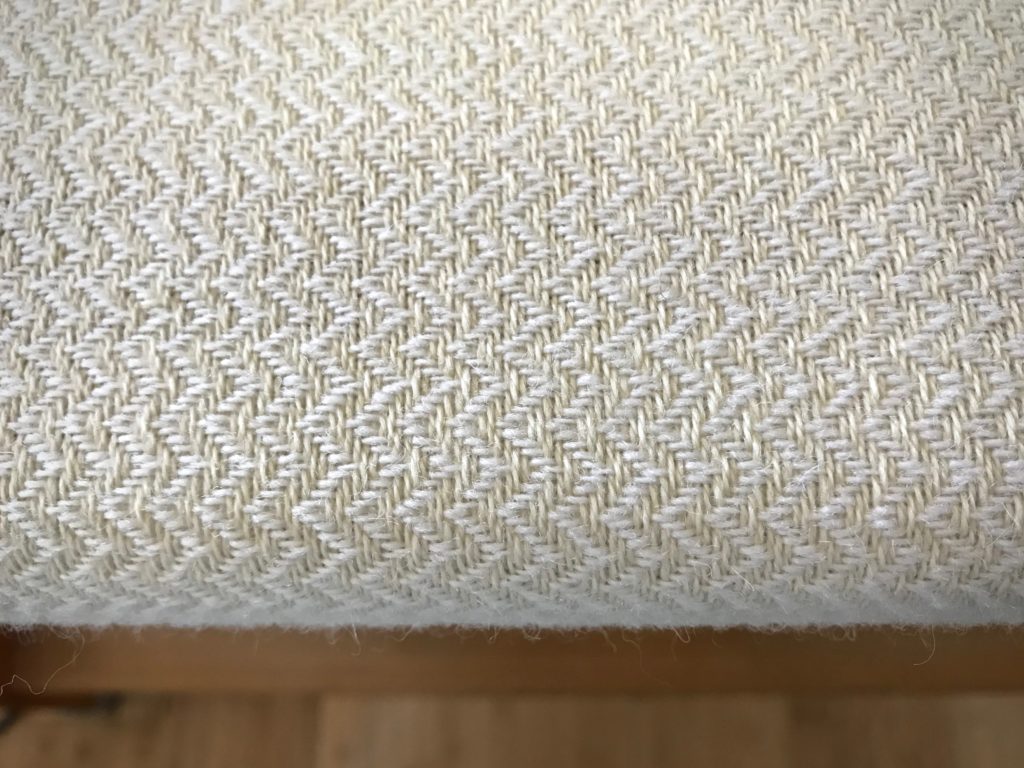
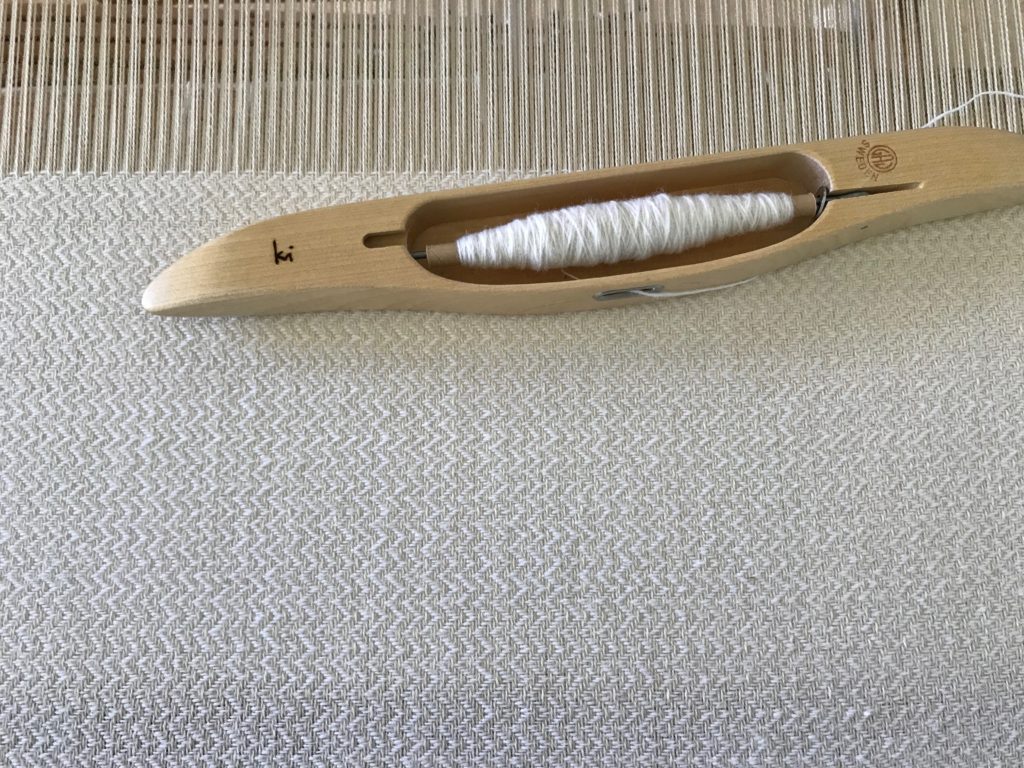
There is a time for color, action, and noise. But we also need a time for serenity, stillness, and quiet reflection. Going alone to sit in the Lord’s presence gives us just that. It is there that we can pour out our heart in prayer. The Lord meets us where we are when we pray. And He tells the trusting heart that everything is going to be all right.
May your heart be at rest.
With you,
Karen
PS Floating Selvedges. Last week I asked if you could tell which one of these four towels was woven without floating selvedges. (1 – 4, with the towel on top as #1.) See Process Review: Jubilation Hand Towels
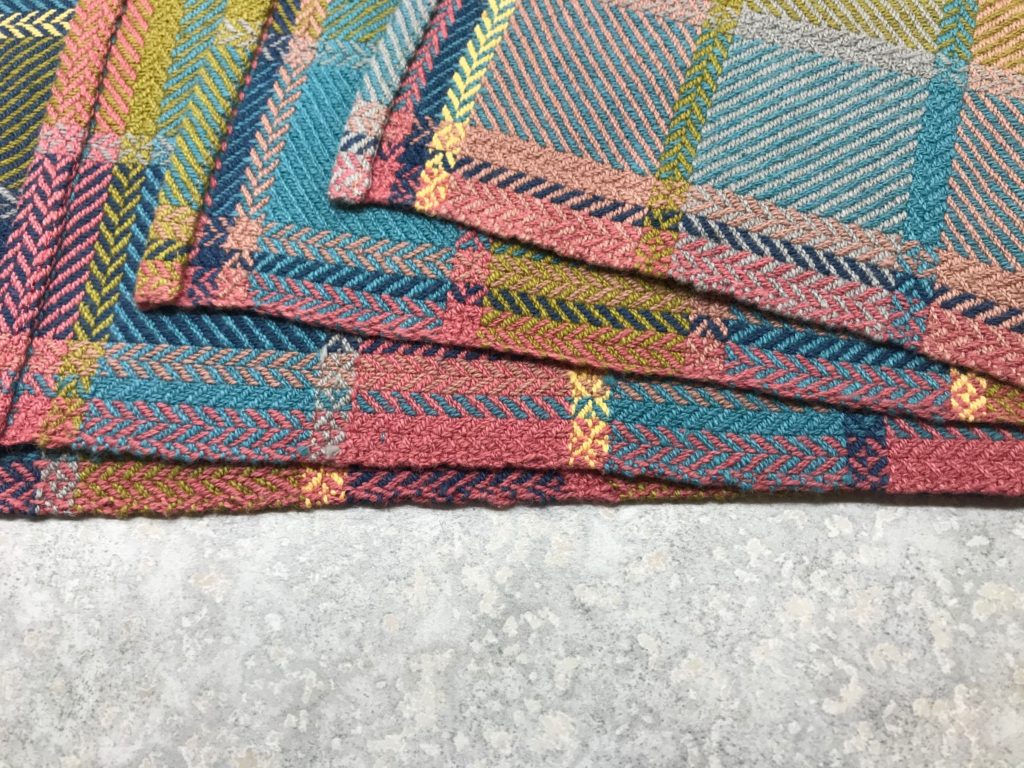
The towel that was woven without floating selvedges is the same towel that received the most votes. Towel #2!
It seems counterintuitive that weaving twill structures without floating selvedges could produce a pleasing edge. But most of the time the small floats that appear at the edge are inconsequential, especially after wet finishing. (By the way, I am weaving the white point twill mentioned above without floating selvedges, as well.)
Thank you for your wonderful participation!

